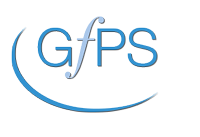Test and analysis methods Laboratory
Example: sort according to s. LS Lab (Does the sorting follow GfPS?)
- Microbiological testing of sterilizers
- Microbiological testing of disinfection cleaning machines
- Microbiological testing of sterilizers and disinfection cleaning machines Legionella testing in accordance with ISO 11731
- Microbiological wash cycle controls
- Microbiological water tests Determination of the hygiene status
- Microbiological functional testing of disinfection devices and processes
- Microbiological functional testing of sterilizers
- Microbiological tests according to relevant regulations, e.g. DGHM guideline, DIN EN 1276, DIN EN 1040, DIN EN 1275, DIN EN 1650
- Sterility testing according to Ph. Eur., USP
- Sterility testing in accordance with DIN ISO 11737-2
- Quantitative determination of bioburden according to DIN EN ISO 11737-1
- Testing for bacterial endotoxins, gel clot and turbidimetric method (Ph. Eur., USP)
- Germ differentiation and identification
- Monitoring and validation of sterilization processes
- Validation, revalidation and performance assessment of sterilization processes (radiation, steam, ETO and plasma sterilization)
- Preservation stress tests
- Testing for the absence of certain microorganisms
- Determination of the total aerobic germs
- Testing the antimicrobial efficacy of surfaces and solid bodies
- Agar diffusion test according to Ph. Eur., DIN 58940-3, DIN EN 1104
- Suspension test according to ASTM E 2149
- Testing in accordance with JIS Z 2801, ISO 22196
- Test according to ASTM E 2180
- Testing according to JIS L 1902
- Validation of disinfection cleaning processes in accordance with DIN EN ISO 15883
- Determination of the bacterial load (bioburden) of textiles with a high requirement for low bacterial count
- Quantitative suspension test to determine the bactericidal and/or fungicidal effect
- Mold differentiation and identification
- Antimicrobial efficacy test
- Quantitative determination of bioburden according to DIN EN ISO 11737-1
- Testing for bacterial endotoxins, gel clot and turbidimetric method (Ph. Eur., USP)
- Germ differentiation and identification
- Monitoring and validation of sterilization processes
- Sterility testing according to Ph. Eur., USP
- Sterility testing in accordance with DIN ISO 11737-2
- Validation, revalidation and performance assessment of sterilization processes (radiation, steam, ETO and plasma sterilization)
- Microbiological testing of sterilizers
- Preservation stress tests
- Testing for the absence of certain microorganisms
- Determination of the total aerobic germs
- Testing the antimicrobial efficacy of surfaces and solid bodies
- Agar diffusion test according to Ph. Eur., DIN 58940-3, DIN EN 1104
- Suspension test according to ASTM E 2149
- Testing in accordance with JIS Z 2801, ISO 22196
- Test according to ASTM E 2180
- Testing according to JIS L 1902
- Validation of disinfection cleaning processes in accordance with DIN EN ISO 15883
- Microbiological testing of disinfection cleaning machines
- Microbiological testing of sterilizers and disinfection cleaning machines Legionella testing in accordance with ISO 11731
- Microbiological wash cycle controls
- Microbiological water tests Determination of the hygiene status
- Determination of the bacterial load (bioburden) of textiles with a high requirement for low bacterial count
- Microbiological functional testing of disinfection devices and processes
- Microbiological functional testing of sterilizers
- Microbiological tests according to relevant regulations, e.g. DGHM guideline, DIN EN 1276, DIN EN 1040, DIN EN 1275, DIN EN 1650
- Quantitative suspension test to determine the bactericidal and/or fungicidal effect
- Mold differentiation and identification
- Antimicrobial efficacy test
Testing and analysis methods Packaging testing
- Packaging tests according to DIN EN ISO 11607-1
- Visual inspection (ASTM F1886 / F1886M)
- Accelerated ageing (ASTM F1980)
- Real-time aging (ASTM F1980)
- Transport simulation (ASTM D4169)
- Bubble test (ASTM F2096)
- Microbial evaluation of porous packaging materials (ASTM F1608
- Peel test (DIN EN 868, part 5)
- Determination of the seal seam width (DIN EN 868, part 5)
- Tensile strength test of sealing seams (DIN EN 868, Part 5, ASTM F88)
- Testing for impermeability and continuity of the seal (ASTM F1929, ASTM F3039)
- Testing for fine holes in the plastic composite film (DIN EN 868, Part 5)
- Germ-tightness test DIN 58953-6
